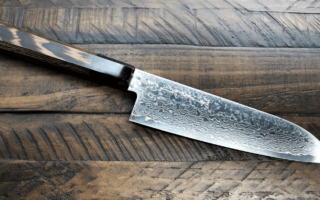Fabricated Stainless steel has unique characteristics which can be noted to take advantage in a wide variety of construction industries. Stainless steel fabrication plays an important role to give the product better finishing. Fabricating stainless steel for your construction projects or any other interior structures can enhance the quality of work. In this blog, we go through the following points.
- We will understand the composition of stainless steel.
- We will examine the process of stainless-steel fabrication.
- We will go through the 11 advantages of stainless-steel fabrication.
What is Stainless Steel?
Steel is an incredible alloy of iron and copper. Stainless steel is from the family of steel containing 10.5 per cent chromium with other alloying elements and less than 1.2 per cent carbon. A chromium oxide layer is formed in contact with oxygen. This chromium oxide layer helps the stainless steel to recover itself from corrosion. Other elements such as nickel, titanium, molybdenum, niobium, copper, phosphorus, nitrogen, selenium, or sulfur are added to increase oxidation resistance. These elements make it corrosion resistant. Stainless steel manufacturing includes bending, folding, welding, and other steps to adjust different uses.
Major Types of Stainless Steel
There are four major categories of stainless-steel family,
Austenitic Stainless Steel
Austenitic has the highest corrosion resistance ability and malleability. It is the most ordinary type of stainless steel. It has 30 per cent nickel and 16 to 20 per cent of chromium. You can find this type of stainless steel in kitchen items, food processing industries and aircraft spare parts. It is expensive but has high strength capability.
Ferritic Stainless Steel
Ferritic have low carbon content with 10 to 27 per cent chromium. Other minerals like molybdenum can be added, containing nickel. It has magnetic properties. It is less corrosion resistant than Austenitic. The other two types of Ferritic are alloy 434 and 430. They are used in automobiles, especially cars, kitchen utensils, architectural and industrial machinery. It is best known for its malleable nature.
Martensitic Stainless Steel
Martensitic is hardened by heat treatment. It is composed of 1.2 per cent carbon and 11.5 to 18 per cent chromium. Martensitic is hard and is corrosion resistant. It is used in cutlery, turbines, valves, pumps, and hospital surgical instruments.
Duplex Stainless Steel
Duplex is the blend of Austenitic and Ferritic Stainless steel. Duplex is stronger. Austenitic is more corrosion resistant than other stainless-steel types. It contains 21 to 27 per cent chromium, 1.35 to 8 per cent nickel, 0.05 to 3 per cent copper, and 0.05 to 5 per cent molybdenum. Due to its high malleability and weldability is used in storage-tank construction, underground oil storage, chemical processing, and containers for transporting chemicals.
Stainless Steel Fabrication:
Stainless steel fabrication is when raw stainless steel goes through several procedures to get the desired product. The fabricated stainless-steel equipment is used in construction, chemical, manufacturing, food processing, etc. The fabricated stainless steel can also be used in your different projects.
Steps Process in Stainless Steel Fabrication
The stainless-steel fabrication process involves the following steps:
Hardening
All the metals can be work-hardened upon cold working. It is based on the type of stainless steel grade. In hardening, we are increasing in hardness of the metal. Hammering, rolling, or different physical processes are carried out.
Machining
The higher steel’s alloying content, the more difficult it is to machine. Therefore, we can say that stainless steel is more difficult to machine. Machining includes the process of milling, turning, drilling, and threading.
Welding
Welding involves joining together different parts through high heat or pressure and cool. There are a variety of methods of welding stainless steel. Major types of welding are Gas Tungsten Arc Welding, Spot Welding and Mig Welding.
Soft soldering
In the soft soldering process, heat is given to the parts to be joined, making the solder melt and bond to the workpieces in a surface alloying process known as wetting—soft solder filler metals with the liquidus temperature below 662 Fahrenheit or 350 centigrade.
Silver Soldering
Other names of silver soldering are hard soldering and silver brazing. Different parts are joined by melting and flowing a filler metal into the joint. Stainless steel, copper, mild steel, brass and cast iron are treated through silver soldering.
Advantages of stainless-steel Fabrication:
Stainless steel fabrication needs a high investment and initial cost in the beginning. No doubt fabricated stainless steel is the most practical and worthy way to have quality equipment in your projects. Following are the 11 advantages of stainless-steel fabrication:
Hygienic
Fabricated stainless steel makes work easy in a hygienic environment. Maintaining cleanliness in food and beverage industries, research spaces, pharmaceutical industry, kitchen appliances, hospitals, hotels, and restaurant facilities is convenient. Its clean surface does not allow bacteria to breed. It can be easily sanitized.
Corrosion-resistant
Chromium makes it less vulnerable to corrosion. Stainless steel fabrication allows the steel to be armed with built-in corrosion resistance. After fabrication, Stainless steels have a very low chance of rusting when exposed to damaging chemicals, saline, grease, moisture, or heat for prolonged periods.
User Friendly
The stainless-steel components are easy to install after fabrication. A quick installation process saves a lot of money and time. Fabricated stainless steel is easy to use if you have the latest technology. Cutting and welding of fabricated stainless steel are quite convenient using modern equipment.
Manageable
Stainless steel usually arrives in the pre-fabrication phase. It is fabricated on-site. Pre-fabrications reduce how much work needs to be done on-site, fast-tracking projects. It helps to evaluate the amount of equipment required on the worksite.
Safety
Stainless steel fabrication reduces the chances of on-site accidents. It can be built off-site. Fabricated Stainless steel material is relatively simple to rebuild after severe storms, damage, explosions, and earthquakes. They are resistant to buckling and distortion when exposed to high loads.
Ecofriendly
Therefore, stainless steel is easily recyclable. It is an environment-friendly option for metal fabricators. Half of the stainless steel comes from previously melted stainless steel scraps and reduces waste. If the companies are concerned about the environmental impact of their products, then fabricated stainless steel can minimize the effects.
Exquisite Appearance
Custom designs and exquisite appearances are among the wonders of stainless-steel fabrication. From simple to complicated design, stainless steel can be twisted or shaped in many ways. Thus, making it an ideal material for flawless finishing. Fabricated Stainless Steel can be easily customized according to the client’s requirements.
Strength
After going through the fabrication process, the stainless steel is highly durable. The tensile strength of fabricated stainless steel is high. It is ideal due to its increased holding strength to density ratio. Its strength influences its overall return on investment. Fabricated Stainless steel offers exceptional advantages for certain applications in construction, combining intrinsic durability with aesthetics, strength, ductility, and formability.
Cost-Effective
Stainless steel fabrication is more cost-effective than the fabrication of other metals such as copper, aluminium, gold, silver, and magnesium. Steel is cheaper than other construction materials with low weight and high strength. Fabricated Stainless steel producers are continually developing their manufacturing processes to reduce costs, lower emissions, shorten lead times, and improve quality. These improvements have helped control the cost of stainless steel within the constraints set by the dependence on raw materials.
Heat and Pressure Resistant
Stainless steel after fabrication has a reputation for its ability to withstand a high amount of heat and radiation. Extreme environments like power plants can withstand radiation and high pressure. Therefore, this feature makes it ideal for developing applications that sustain high temperatures like feedwater heaters, boilers, pipes, pressure channels, fuel cladding, condenser tubes, fuel pool liners, valves, and other types of heat exchangers.
Long Life Span
Fabricated stainless steel is economical with a great long-life span. It is typically the inexpensive option when estimating life cycle costs because it adds to the overall return on investment. Well-built steel-framed structures have an average of 20-30 years shelf life if well maintained.
Conclusion
Stainless steel has many desirable characteristics which can be used in a wide range of construction applications. It is corrosion-resistant and long-lasting. It makes tough and more durable structures possible. It presents architects with many possibilities of shape, colour, and form while being tough, hygienic, adaptable, and recyclable.
After reading this blog post, you understand stainless steel metals are. You can look forward to accomplishing more in construction how the fabrication processes work with their advantages. So long as you have a reliable team with in-depth knowledge of handling stainless steel and its various grades, you’re in good hands.
Are you looking for a stainless-steel fabrication specialist in UAE to assist your upcoming project? Al-Safrik Steels specializes in reinforcing sales, production, steel fabrication, decorative concrete products, and more. You might be exposed to design and quality issues without the right fabrication company. Get in touch with us today for an estimate so we can begin working for you!

Hi, my name is Taras Kulakov and I’m a knife enthusiast. I have been collecting knives for over 30 years and I’ve owned literally thousands of different models over that time. My goal with this site is to share some of what I’ve learned about knives. You can find more info about Taras Kulakov here.




